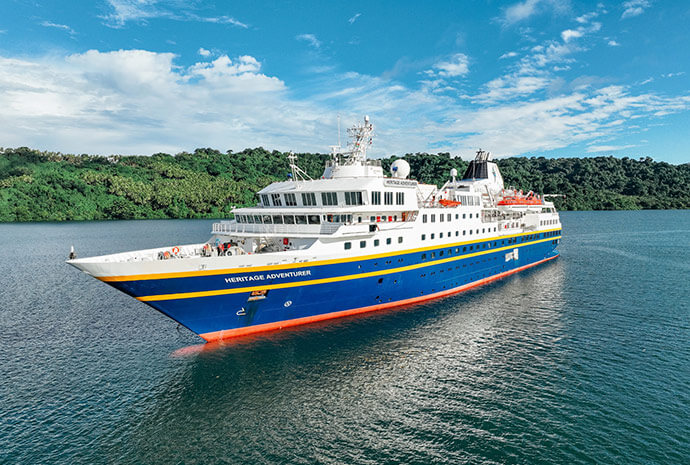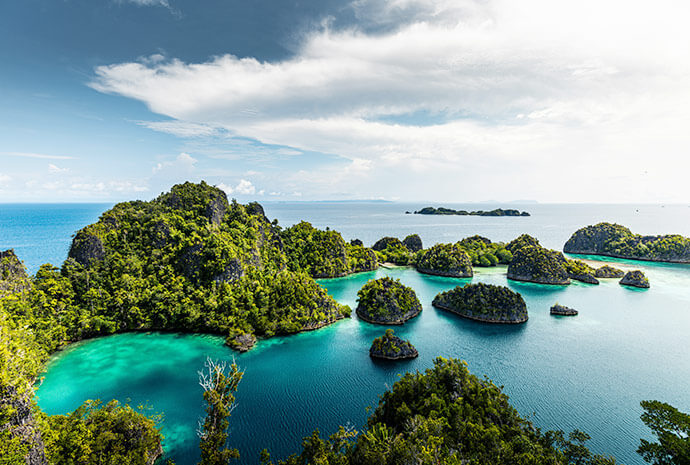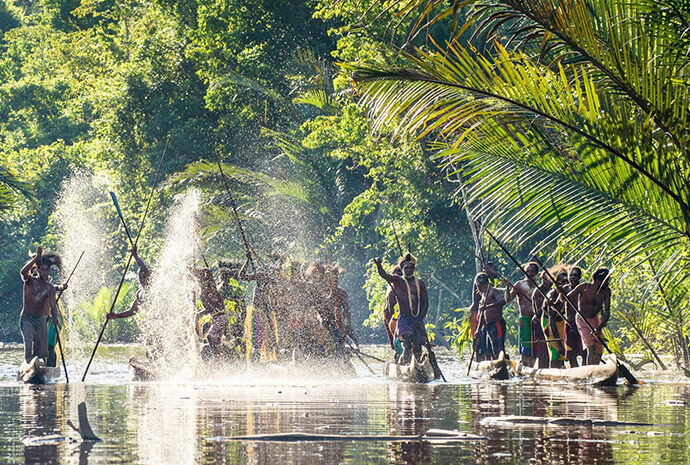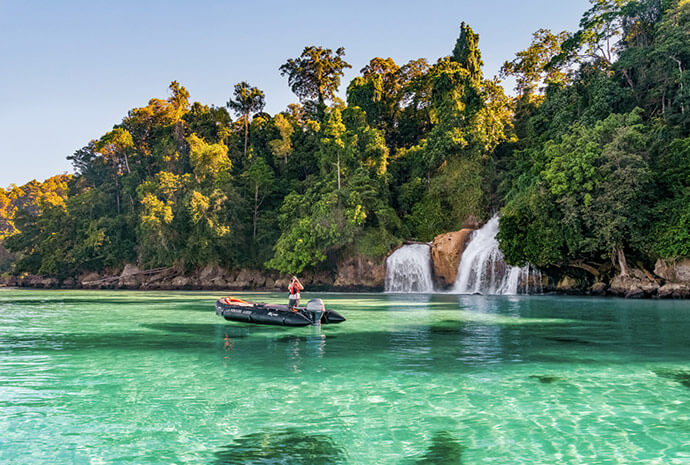Western Pacific Odyssey Birding Expedition
Renowned Birding Cruise from New Zealand to Japan
Extended Western Pacific Odyssey Birding Expedition

Single Cabins Available
Extended Western Pacific Odyssey Birding Expedition
Aboard: Heritage Adventurer
Step aboard a pioneering expedition vessel to uncover many of the key birding areas in the South West Pacific on this fantastic voyage that is considered one of the 'must do' expeditions for any birder. Known in birding circles simply as the 'WPO', this renowned expedition will take you from New Zealand to Japan via Papua New Guinea, with opportunities to see some of the rarest pelagic seabirds in the world, plus many island endemics. Although offering a focus on birding, it’s not only birders that will thoroughly enjoy this adventure. An outstanding number of cetaceans can also be found in this area, and that’s not to mention the landscapes! Towering tropical rainforests, remote beaches and wild oceans will provide the perfect backdrop to exploration.
Accompanied by some of the best pelagic birding guides in the world, long and exciting days will be filled with birdwatching opportunities as we visit multiple islands and rich waters boasting an incredible diversity of wildlife.
Please note: This expedition can be taken as a 15 day itinerary concluding in Kavieng, Papua New Guinea, or as a 25 day itinerary sailing on through to Japan as shown in the day-by-day description. Please enquire for full dates and rates.
Highlights
- Embark upon one of the world’s “must do” expeditions for birders!
- Discover the key birding areas in the South West Pacific accompanied by some of the best pelagic birding guides in the world
- Go in search of some of earth’s rarest pelagic seabirds including Bryan's and Heinroth's shearwaters, Beck's petrels, Bonin white-eyes, short-tailed albatross and many, many more
- Explore around fascinating islands of New Zealand, Australia, Papua New Guinea, the Solomon Islands and Japan on one unforgettable adventure
- Excellent chances of spotting a wide range of cetaceans
- Sail in comfort with towering tropical rainforests, remote beaches and wild oceans as your backdrop
What's Included
- Transfers to and from ship for arrival and departure
- All meals on board ship, with wine, beer & soft drinks with lunch & dinner
- All expedition shore excursions
- Specialist birding guides
- Programme of lectures

Single Cabins Available
This vessel offers single occupancy cabins, which is a perfect option for solo travellers. Travelling alone is often the best way to see the world. No responsibilities, no difficult choices and no trying to please anyone else…just you, your itinerary and your adventurous spirit!
So much to experience
























































Our popularitinerary Suggestions
All our itinerary holidays are fully customisable

Auckland, New Zealand

Mokohinau Islands and the Hauraki Gulf

At Sea & Norfolk Island, Australia

At Sea & Riviere Bleue, New Caledonia

Mount Koghi

At Sea

Guadalcanal, Solomon Islands

At Sea & Bougainville Island, PNG

Kavieng

At Sea

Chichi-jima Island, Japan

Haha-jima Island

Tori-shima Island

At Sea & Osaka
A view from Above
All Aboard

Heritage Adventurer
Previously known as the MS Hanseatic, the Heritage Adventurer is a renowned authentic expedition ship. Purpose-built with ice-strengthened hull, the vessel combines the highest passenger ship iceclass rating (1A Super) with an impressive history of Polar exploration. Designed to match Heritage’s signature experiential expedition travel, the ship accommodates up to 140 guests in welcoming and spacious cabins that feature outside views, separate lounge areas, TVs, en-suite bathrooms and double or twin beds.
Communal areas include a lounge, two restaurant areas including an al-fresco bistro, gym and spa, lecture theatre, library, passenger lifts and outdoor swimming pool and jacuzzi.
Too much to choose from? This is where we come in
Take advantage of our vast experience, passion and expertise to help you hand craft the perfect Japan, Papua New Guinea adventure for you.

Mike has more than 15 years of experience in the travel industry and continues to be inspired by the people, places and wildlife he discovers. His in-depth personal knowledge of a diverse range of destinations ensures your adventure itinerary will be a holiday like no other.

With a lifetime of unforgettable nature and adventure based travel under his belt, Simon shares his passion, enthusiasm and hands-on experience to help create the perfect itinerary for every client.

Having amassed a host of extraordinary adventures in destinations all over the world, Amy’s experience, skills and enthusiasm for helping clients plan their ideal itinerary will help make your holiday unforgettable, action packed and life-changing.
Ready to start planning youronce in a lifetime trip?
Call us
0800 195 3385
Outside the uk
+ 44 1625 5811 43
Call us
+ 44 1625 5811 43
Call us
+ 44 1625 5811 43
Chat Now
Request a
callback
Fill in our
Enquiry form

Book a
Consultation
Ready to start planning youronce in a lifetime trip?
Call us - 0800 195 3385
Outside the uk? + 44 1625 5811 43
+ 44 1625 5811 43
Call us - 0800 195 3385
Chat Now
Request a
callback
Fill in our
Enquiry form

Book a
Consultation




